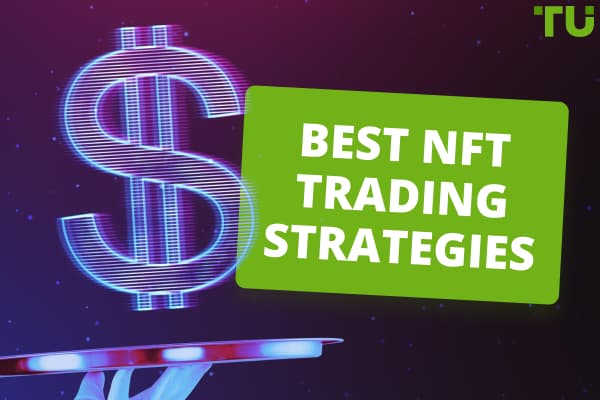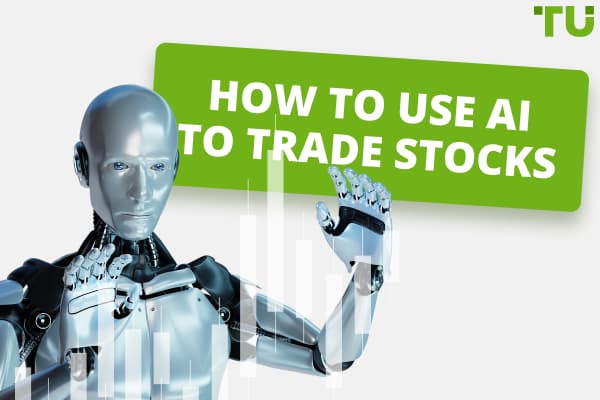Limit Order vs Market Order: Definition And Use Cases
Stock traders, both new and seasoned, continue to debate over market orders vs. limit orders and their use cases. Hearing the repetitive buzz words can confuse those just beginning their investment journey. To create a more unified understanding, we've compiled this master guide that's safe for industry beginners and proficient traders alike.
Start trading stocks with DegiroWhat Is a Limit Order?
Limit orders are a type of order placed in the market to sell or buy a security when the stock reaches a certain price, otherwise known as "the" price. Traders place limit orders in hopes that the stock will trade at or below your limit price. Ultimately, limit orders give traders the power to name their price before committing to a purchase.
Limit Order Example
Let's say stock XYZ has a market value of $15. You are interested in buying stock in XYZ but only for $13. If you suspect the stock will drop in the near future, you could set a limit order to automatically trigger the purchase of X number of XYZ stock before a predetermined expiration date.
Likewise, if you wanted to sell this stock at $30, and the market rose to $30, the sell limit order would automatically trigger and fill the order at this price.
Pros and Cons of Limit Orders
The primary advantage of a limit order is the ability to purchase at a lower price while keeping losses manageable and avoiding substantial market movements when market conditions change unexpectedly.
A disadvantage is that the market value of a given stock may never reach your limit, causing you to miss out on purchasing or selling the security at all. Furthermore, even if the market price does meet your limit order, there may not be enough demand or supply to fulfill your request.
What Is a Market Order?
A market order is a request for an immediate trade of securities at the current market price. Since market orders are priced based on the current market conditions, it restricts traders' options and forces them to purchase or sell the going rate only.
Market Order Example
Let's assume you place a market order for shares of XYZ. You purchase that stock at the given price, but if market conditions drop unexpectedly, you may have paid more than you would have with a limit order.
Pros and Cons of Market Orders
One benefit of market orders is that you can execute them immediately, which is excellent for fast market conditions. However, one of the most significant drawbacks of market orders is that you cannot specify the trade price. Another downside is that the fill price may differ from the market price shown at purchase due to low liquidity or the spreads of specific stocks. Therefore, if you want to have control over the range of your fill price, market orders may not be the best option.
What are the Other Types of Orders?
Market and limit orders are the two most frequently used types of orders. However, there are other forms of orders that you should be aware of.
Stop Order
Also referred to as a stop-loss order, a stop order is an order to buy or sell a stock once the price of the stock reaches a specified stop price. Once the security reaches the stop price, a stop order becomes an automatically triggered market order. Thus, stop orders allow traders to limit losses and protect profits.
Stop-Limit Order
Traders can use a stop-limit order when they would like the stop price to become a limit price once a security meets the stop price. Limit orders placed as "stop-limit" will only become a market order when the stop price has been matched or exceeded.
Stop Market Order
A stop order becomes a market order when it reaches the stop price. However, this means that the order may not necessarily be filled at the stop price. Since it becomes a market order, the executed price may be worse or better than the stop price, similar to how a market order can vary slightly from the price shown.
Buy-Stop Order
A buy-stop order is entered at a stop price above the current market price. Traders generally use buy-stop orders to limit a loss or protect a profit on a stock that has been sold short.
What Type of Order to Choose?
Market orders are the most common type of trade utilized in today's market. On the other hand, limit orders tend to be used when traders want to maximize their profits by purchasing a security below its current market value. Limit orders also protect investors from sudden downtrends in stock prices that can result in a substantial loss for those without this safeguard.
Still, each type of order has its unique set of use cases, and one should not be used exclusively without the other. That is to say, they both may play a role in a savvy investor's portfolio.
Market Order vs. Limit Order: Use Cases
Either a market order or a limit order may suit your needs depending on your goals as the trader. So let's explore some situations when you would want to use a market order vs. a limit order.
Market Order Use Cases
Market orders work best in high liquidity scenarios, like when purchasing stocks with high daily trading volumes.
A market order may be the best option when:
-
You want to purchase a stock quickly at any cost
-
You are trading a highly liquid stock with a narrow bid-ask spread (typically a penny)
-
You are interested in trading only a few shares (typically less than 100)
Limit Order Use Cases
Since limit orders are ideal for low liquidity conditions, they may be your best choice when you need to purchase or sell stocks that have low daily trading volumes. Limit orders can also help protect investors from substantial losses during sudden, unexpected downtrends in the market.
A limit order may be the best option when:
-
You want to specify a particular price, which may be very different from the current market price
-
You want to trade an illiquid stock or the bid-ask spread is large (typically greater than 5 cents)
-
You are interested in trading a high number of shares (typically more than 100)
How to Place an Order: Step-by-Step Guide
Not everyone is born into a financially savvy household, and, unfortunately, they don't teach stock trading in schools (yet). But, luckily, placing an order in the market is relatively easy.
Placing a Market Order
The steps associated with placing a market order may vary depending on the app or platform that you use. However, below is a generic step-by-step guide:
Open your investing app or platform
Navigate to the stock or ETF that you are interested in purchasing
Select Sell, Buy or Trade
Enter the exact number of shares or the dollar amount that you are willing to purchase or sell
Confirm your trade
Your order has been sent to the market and may be filled in a matter of seconds
Placing a Limit Order
Now let's take a look at the steps associated with placing a limit order. Again, these steps may vary depending on the app or platform that you use. Below is a generic step-by-step guide:
Open your investing app or platform
Navigate to the stock or ETF that you are interested in purchasing
Select Sell, Buy or Trade
Choose "limit" from the order type
Set your limit price
Set the desired expiration date for this order
Enter the number of shares you would like to sell or purchase
Confirm your trade
Your order has been sent to the market and will be automatically filled at the price that you set, assuming there are enough shares available to fill your trade
Best Stock Brokers
Are you ready to get started on your investing journey but don't know where to go from here? There are tons of platforms available today to help you on your quest. Below are two of our favorites:
Webull
Webull is an online investing and trading platform where investors can trade stocks, ETFs and options, and cryptocurrencies. It is available both online and as an app. They support the following order types:
limit order
market order
stop order
stop limit order
take profit order
stop loss order
Webull costs $0 per trade, meaning that they don't take commissions on your trades, and they also have a $0 account minimum. In other words, Webull is free to use. However, they do have a $75 transfer fee if you ever want to move securities to a different account. Thus, Webull may be the best platform for new to intermediate investors, active traders or those interested in cryptocurrency trading.
eOption
eOption is another excellent online stock trading platform that is mobile-friendly. They support the trading of stocks, bonds, mutual funds, ETFs and options through the following order types:
limit order
market order
stop limit order
trailing stop
eOption has a low $.10 contract fee for options trades but otherwise has no other fees. They do have a $500 account minimum and a $15 annual fee for IRAs. While they do have a $50 inactivity fee, this fee is easily avoidable as long as you are active and trading at least twice per year. eOption may be the best platform for advanced traders, international investors, and those looking for automated trading.
Summary
Both market orders and limit orders have their role in security trading. However, limit orders may be the superior option for those looking for complete control over their profits, losses and the pricing of their securities.
On the other hand, market orders are great for those who are looking for speed over control. This is because market orders allow for the immediate purchasing of a given security without having to wait for the market to move in either direction.
In conclusion, limit orders may be the way to go for day traders and other active investors, while market orders are great for short-term traders or those who aren't involved in the trading game on a daily basis. Still, getting familiar with limit orders can only enhance your investment portfolio.
FAQs
What is the difference between Limit Orders and Market Orders?
Limit orders allow investors to set the desired price, but market orders let you buy or sell at the current market value.
When should I use a Limit Order?
You should use a limit order when you have a specific price you would like to buy or sell a security for. You can also use limit orders to protect your investment portfolio, especially if you are a day trader or active investor.
When should I use a Market Order?
You should use a market order when you are trying to buy or sell as quickly as possible. This is because market orders will buy or sell at the given market value instead of waiting for a security to meet the desired price.
How does a limit order relate to a stop-limit order?
A stop-limit order is the initial trigger of submission of a limit order. Once the stock reaches or breaks through a specified stop price, it will automatically set a limit order. You do not have to set a stop-limit order to set a limit order.
Glossary for novice traders
-
1
Limit order
A limit order is a type of order used in trading where an investor specifies a particular price at which they want to buy or sell a financial asset. The order will only be executed if the market price reaches or exceeds the specified limit price, ensuring that the trader gets the desired price or better when the trade is executed.
-
2
Broker
A broker is a legal entity or individual that performs as an intermediary when making trades in the financial markets. Private investors cannot trade without a broker, since only brokers can execute trades on the exchanges.
-
3
Trading
Trading involves the act of buying and selling financial assets like stocks, currencies, or commodities with the intention of profiting from market price fluctuations. Traders employ various strategies, analysis techniques, and risk management practices to make informed decisions and optimize their chances of success in the financial markets.
-
4
Investor
An investor is an individual, who invests money in an asset with the expectation that its value would appreciate in the future. The asset can be anything, including a bond, debenture, mutual fund, equity, gold, silver, exchange-traded funds (ETFs), and real-estate property.
-
5
Cryptocurrency
Cryptocurrency is a type of digital or virtual currency that relies on cryptography for security. Unlike traditional currencies issued by governments (fiat currencies), cryptocurrencies operate on decentralized networks, typically based on blockchain technology.
Team that worked on the article
Ivan is a financial expert and analyst specializing in Forex, crypto, and stock trading. He prefers conservative trading strategies with low and medium risks, as well as medium-term and long-term investments. He has been working with financial markets for 8 years. Ivan prepares text materials for novice traders. He specializes in reviews and assessment of brokers, analyzing their reliability, trading conditions, and features.
Olga Shendetskaya has been a part of the Traders Union team as an author, editor and proofreader since 2017. Since 2020, Shendetskaya has been the assistant chief editor of the website of Traders Union, an international association of traders. She has over 10 years of experience of working with economic and financial texts. In the period of 2017-2020, Olga has worked as a journalist and editor of laftNews news agency, economic and financial news sections. At the moment, Olga is a part of the team of top industry experts involved in creation of educational articles in finance and investment, overseeing their writing and publication on the Traders Union website.
Mirjan Hipolito is a journalist and news editor at Traders Union. She is an expert crypto writer with five years of experience in the financial markets. Her specialties are daily market news, price predictions, and Initial Coin Offerings (ICO).












